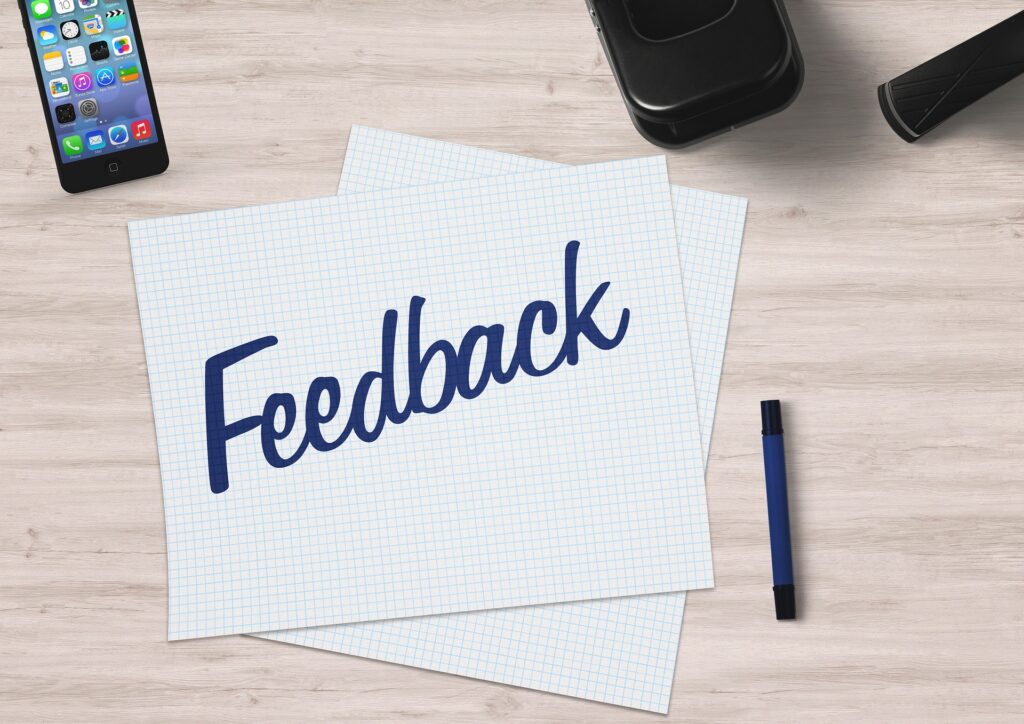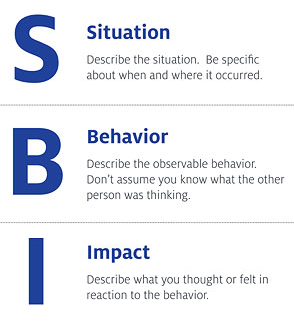What is Feedback and Why is it Important?
Imagine walking into a performance review, anticipation building as you sit down… only to be met with silence. No pointers, no insights, no encouragement—just a polite nod and an “All good.” You leave the meeting with unanswered questions: What’s working? What needs improvement? What’s my next step? Without feedback, growth stalls, leaving us without direction or understanding. Feedback, however, fills this gap, offering insights that help us sharpen our skills, recognize our achievements, and align our efforts toward shared goals.
Feedback is more than just a buzzword; it’s a foundational practice for personal growth and organizational success. Whether it’s delivered formally or in quick, informal check-ins, feedback shapes how we grow, learn, and connect.
What Exactly is Feedback?

At its core, feedback is information that we share with someone about their performance, behavior, or results. Feedback isn’t just about pointing out areas for improvement; it’s equally about recognizing strengths and reinforcing positive behaviors. Constructive feedback is developmental, encouraging individuals to adjust, improve, and excel. Positive feedback, on the other hand, highlights what’s already working, allowing us to build upon these successes.
Feedback can take many forms—whether it’s a quick, “Nice job on that project!” or a more detailed conversation about improving specific skills. It’s a tool, not a one-size-fits-all solution, and it requires tailoring to the individual and the context. Done well, feedback is empowering, actionable, and rooted in the goal of mutual growth.
Why Feedback Matters for Personal and Organizational Growth
Personal Growth
On an individual level, feedback enhances self-awareness, builds confidence, and fuels improvement. By understanding what we’re doing well and where we can improve, we gain control over our growth. Feedback pushes us out of our comfort zones, encouraging us to stretch our capabilities and seek new skills. For instance, constructive feedback can help us tackle areas where we might be holding back, while positive feedback reinforces what we’re excelling at, allowing us to channel our efforts into those strengths.
Organizational Health
For organizations, feedback is essential to fostering a culture of transparency, trust, and collaboration. Regular, open feedback breaks down silos, empowers teams to work more effectively, and aligns everyone toward common objectives. Employees who receive regular feedback tend to be more engaged, motivated, and confident in their roles. When feedback flows freely across all levels of an organization, innovation thrives. People are willing to take risks, propose ideas, and learn from their experiences because they know that feedback is a means of growth, not punishment.
Addressing Common Misconceptions about Feedback
While most of us acknowledge the importance of feedback, misconceptions often cloud how we view it:

- “Feedback is only necessary when something goes wrong.” Feedback isn’t just corrective; it’s also an opportunity to celebrate achievements. Positive feedback acknowledges the hard work and creativity people bring to their roles, reinforcing those strengths.
- “Feedback should only come from managers or leaders.” Feedback can and should come from all directions—managers, peers, and even direct reports. Encouraging a culture where everyone feels empowered to give feedback creates a supportive environment where growth is everyone’s responsibility.
- “Giving feedback means being blunt or critical.” Constructive feedback should be clear and direct, but also respectful and supportive. The goal is to guide improvement, not to criticize harshly or undermine someone’s confidence.
The Value of Both Giving and Receiving Feedback
Effective feedback isn’t a one-way street; it’s a continuous, reciprocal process. Both giving and receiving feedback well are valuable skills. Those who give feedback effectively offer specific, actionable insights that guide improvement. Meanwhile, those who are open to receiving feedback show a commitment to growth, resilience, and adaptability. Giving feedback shows that we’re invested in others’ success, while being open to feedback demonstrates our own commitment to learning and evolving.
Introducing the SBI Model for Feedback
This week, I’m giving away a practical tool for providing clear, constructive feedback: the SBI (Situation-Behavior-Impact) model. The SBI model is designed to help structure feedback so that it’s precise and focused, making it easy for the recipient to understand and act upon.
Here’s how the SBI model works:

- Situation: Describe the specific situation where the behavior occurred. This helps set the context and focuses the feedback.
- Behavior: Clearly state the behavior observed. This step is crucial—focus on observable actions, not interpretations or assumptions.
- Impact: Explain the impact the behavior had. This could be the effect on the team, the project, or even the individual’s own goals.
For example: “In yesterday’s team meeting (Situation), I noticed you shared your insights on the project’s challenges (Behavior). This helped the team gain a clearer perspective and encouraged others to contribute more openly (Impact).”
The SBI model keeps feedback factual and anchored in observation, removing guesswork and making it easier to foster constructive conversations. You can download the tool for a more detailed look and start applying this model in your feedback practices right away.
Building a Foundation for Growth
When we embrace feedback as a regular part of our work lives, we open the door to continuous improvement. Let’s make it a habit to see feedback as a shared tool that helps us all reach new heights.
As we kick off this month-long exploration of feedback, I invite you to reflect on your own experiences. When was the last time you gave or received meaningful feedback? How did it shape your perspective? In the coming weeks, we’ll dive deeper into the art of giving and receiving feedback, tackling the skills needed to handle it effectively and strategies for navigating difficult conversations. Stay tuned for Week 2, where we’ll discuss the importance of being able to both give and receive feedback and explore the skills that make it possible, like active listening and open-mindedness. Let’s build a foundation for effective, empowering feedback that drives real change.